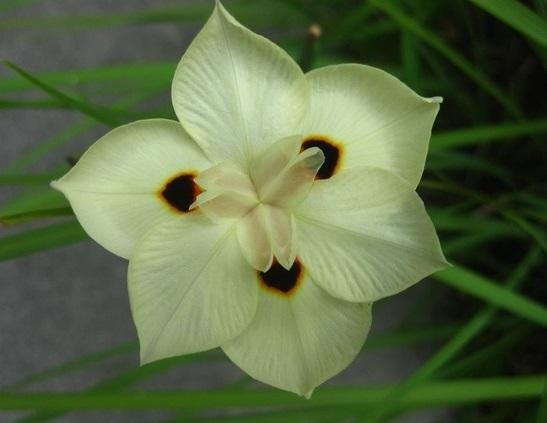
What is a trimerous flower? Which group of plants has trimerous flowers?
Answer
491.1k+ views
Hint: Flowers are a plant's reproductive organ. They are not only involved in reproduction, but also serve as a food supply for other living things. They produce a lot of nectar. There are two types of flowers: complete and incomplete. The sepals, petals, stamens, and pistils all make up a whole flower. On the other hand, an incomplete bloom is one that lacks one or more of these structures. A whole flower is made up of two distinct parts: Parts that are vegetative and those that are reproductive.
Complete answer:
Floral symmetry refers to the ability of a flower, specifically its perianth, to be divided into two or more identical or mirror-image portions.
Flowers with only three petals are known as trimerous flowers. Monocotyledons have trimerous flowers. Monocotyledons are plants with only one cotyledon. Monocot leaves feature parallel venation and have a fibrous root structure. Garlic, onions, wheat, corn, and grass, rice, maize, bamboo, palm, banana, ginger, lilies, orchids, and tulips are examples of edible plants.

Additional information:
Petals, Carpels, Sepals, and Stamens are the four whorls that make up every flower. The flower bud is surrounded by sepals, which are leafy structures. The Petals have contrasting colours to encourage pollinating insects. Male reproductive structures are androecium, whereas female reproductive structures are Gynoecium.
Note:
Pollination is the process through which flowers reproduce. Male gametes are transmitted to female ovules, where fertilisation happens and ovules mature into seeds within a fruit, in this process. The male reproductive component of a flower is the stamen, whereas the female reproductive part is the pistil. The filament and anther encircle the stamen. Pollen grains are produced by the anthers. The vegetative portions of a flower are the sepals and petals.
Complete answer:
Floral symmetry refers to the ability of a flower, specifically its perianth, to be divided into two or more identical or mirror-image portions.
Flowers with only three petals are known as trimerous flowers. Monocotyledons have trimerous flowers. Monocotyledons are plants with only one cotyledon. Monocot leaves feature parallel venation and have a fibrous root structure. Garlic, onions, wheat, corn, and grass, rice, maize, bamboo, palm, banana, ginger, lilies, orchids, and tulips are examples of edible plants.

Additional information:
Petals, Carpels, Sepals, and Stamens are the four whorls that make up every flower. The flower bud is surrounded by sepals, which are leafy structures. The Petals have contrasting colours to encourage pollinating insects. Male reproductive structures are androecium, whereas female reproductive structures are Gynoecium.
Note:
Pollination is the process through which flowers reproduce. Male gametes are transmitted to female ovules, where fertilisation happens and ovules mature into seeds within a fruit, in this process. The male reproductive component of a flower is the stamen, whereas the female reproductive part is the pistil. The filament and anther encircle the stamen. Pollen grains are produced by the anthers. The vegetative portions of a flower are the sepals and petals.
Recently Updated Pages
Master Class 12 Business Studies: Engaging Questions & Answers for Success

Master Class 12 Economics: Engaging Questions & Answers for Success

Master Class 12 English: Engaging Questions & Answers for Success

Master Class 12 Maths: Engaging Questions & Answers for Success

Master Class 12 Social Science: Engaging Questions & Answers for Success

Master Class 12 Chemistry: Engaging Questions & Answers for Success

Trending doubts
Which animal has three hearts class 11 biology CBSE

1 Quintal is equal to a 110 kg b 10 kg c 100kg d 1000 class 11 physics CBSE

Explain zero factorial class 11 maths CBSE

The camels hump is made of which tissues a Skeletal class 11 biology CBSE

How do I convert ms to kmh Give an example class 11 physics CBSE

The percentage of free SO3 in oleum sample which is class 11 chemistry CBSE




